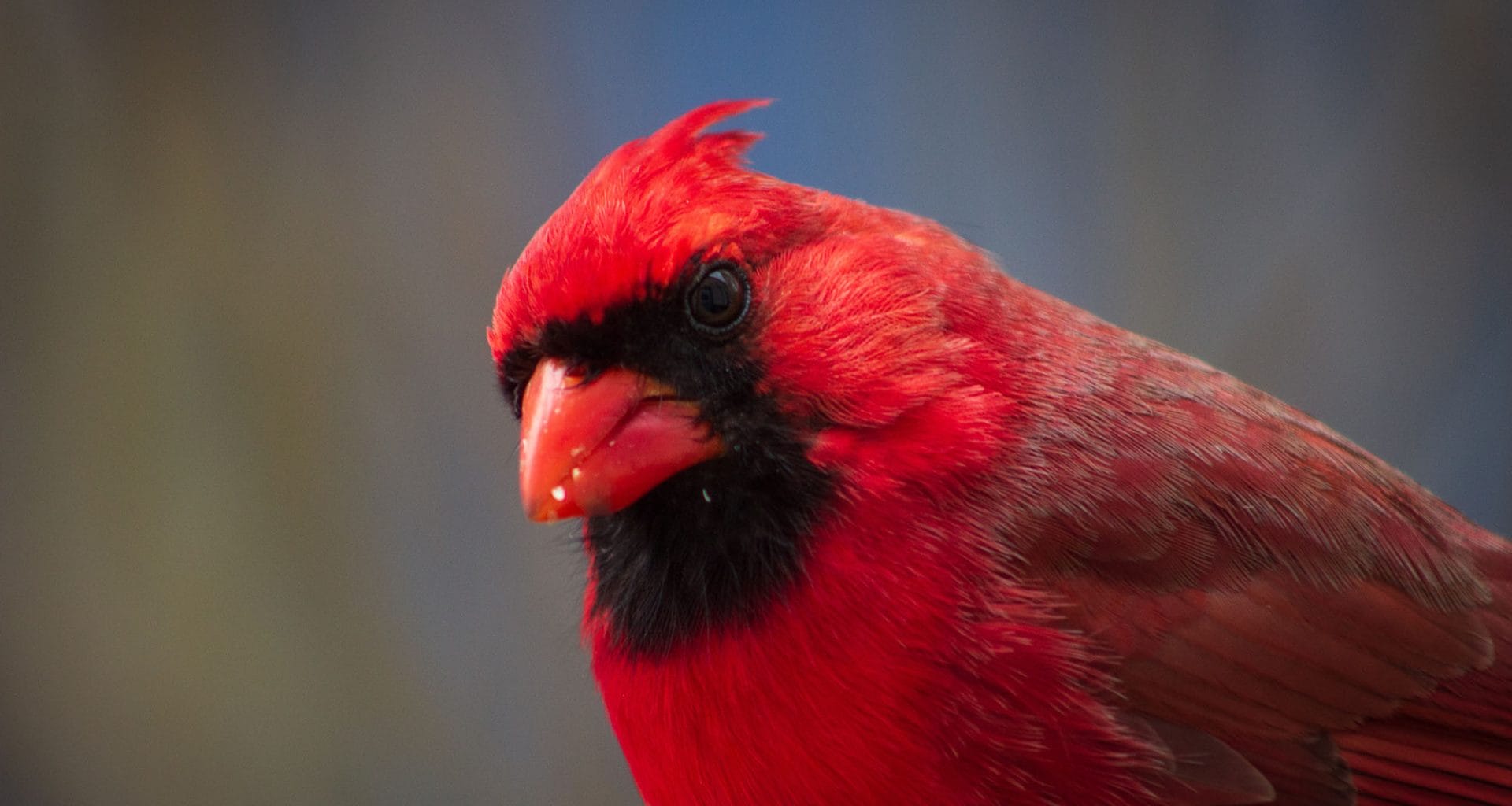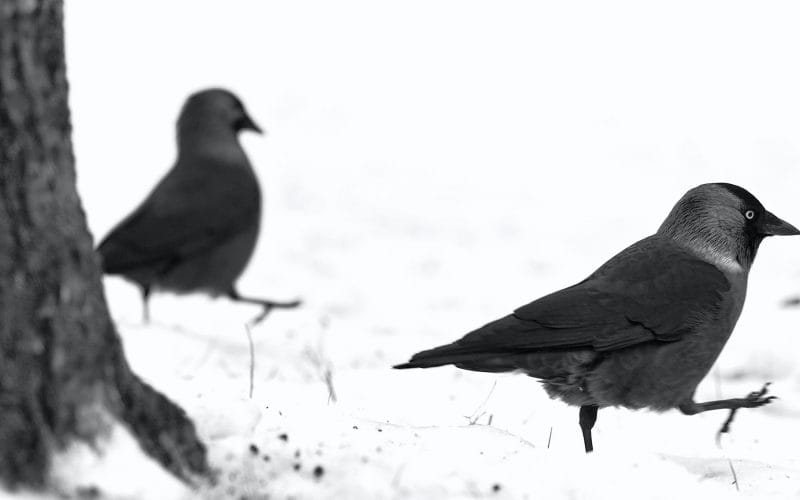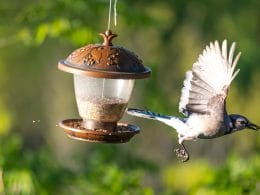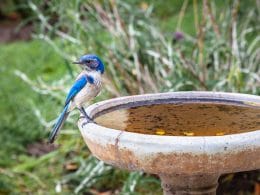Cardinals are beautiful little songbirds that are a welcome visitor to almost any garden. They sing a variety of lovely melodies, which change according to the area they live in. Their striking scarlet plumage makes them beautiful to look at as well as listen to. You may be wondering, is hand feeding Cardinals hard?
The short answer is yes, especially in suburban areas. It also can be dangerous to the birds, as they will get too comfortable being around humans. We recommend not trying to hand feed Cardinals.
Stick to feeding your local Cardinals with a feeder. You probably already have cardinals visiting your garden and eating from your bird table. If not, a bird table to attract them is the place to start. Birds like routine, so try to refill the feeder at the same time each day.
But if you do want to learn the proper steps to hand feeding Cardinals, we will show you how.
Hand Feeding Cardinals: Start Here
Every time you interact with the birds, it is important to remain quiet and calm and to move slowly. Any time you spook the birds, it will knock off a few of those trust points you worked so hard to accrue.
When you want to hand feed your cardinals, it is best to do so at the scheduled refilling time. The birds will be expecting you with their meal. Set out a few morsels of food on the feeding table and take a seat nearby.
A bench will make the process much more comfortable for you, especially if it has armrests. Drop a few more snacks between yourself and the feeding station. Keep your hand outstretched and still with a small pile of food in your palm.
Author Note: Ensure there is more food in your hand than at the feeder. Keep your hand low so the birds can easily see your offering. If they are still hesitant, place a few more seeds or nuts on the armrest at the far end of the bench to entice them closer.
Once they are comfortable eating with you sitting alongside them, the next step is for them to take food from your hand. This requires patience and confidence, don’t flinch away from the bird, or you will spook it.
Some advise that you should speak softly as you go about the garden in the company of the birds. This will get the birds used to your voice and helps them to recognize you.
If there are other people nearby that hand feed the same cardinals, you will find that your progress is much quicker.
Introducing Friends

It can be fun to flex your Doctor Doolittle skills in front of your friends. But they can even take part in feeding time too. Remember that you have to coach your friend through the routine. A mistake on their part could jeopardize the relationship you have with your cardinal.
Birds can recognize our faces and can even identify human individuals by the sound of their voice. Remind your friend to be patient, the bird knows you by now, but your friend is still a stranger.
The trust you have built with the bird goes a long way. Much of it will be carried over to newcomers in your presence. It should only take a few minutes for the birds to try the morsels your friend is offering. Just make sure your friend has the most food available.
Again it is important to let the bird have the last say. Are being particularly hesitant to visit your feeder? Try to coax a bird onto your fingertips. Once the bird is comfortable on your hand, slowly move closer to your friend. This will show the bird that you trust the ‘stranger.’
What Do Cardinals Eat?
Cardinals like fresh fruit, berries, grain, seeds, and nuts. But the young are fed almost exclusively on insects and invertebrates. What they like best in a feeder is safflower.
Their diet changes depending on the season. Cardinals are ground feeders and will peck at the seeds of grass and weeds. Fallen fruit and berries, as well as snails and worms, are the staple in summer. Seeds and nuts remain a viable food source for longer and provide most of the nutrition through winter.
Attracting Cardinals
Cardinals, like most birds, like to keep clean. A birdbath will add more value to your avian real estate. With more provisions for birds in your garden, the longer they will stay, the more regularly they will visit. Remember to keep changing out the birdbath water, so it stays fresh.
When attracting birds to your yard for the first time, ensure your feeder never runs dry. Still maintain your refilling schedule. Even the feeder doesn’t actually need topping up, or you don’t see the birds. They might be watching you.
The birds will soon recognize your regular presence in their domain. Every time you are deemed ‘no threat,’ adds a mark of trust. Once you have regular visitors at your feeder, it is time to change tack.
Top Tip: Spend some time watching the birds feed, keep your distance at first and slowly move closer and closer. Don’t get too close too quickly. Take three of four days to close the distance, starting from about ten feet away.
When the birds stop eating and start watching, you don’t approach any closer. A hunter’s tactic may allow you to draw closer to the birds. Crouching lower and lower as you approach helps to distort an animal’s perspective. This stops your outline from growing larger against the horizon.
Be careful not to startle the birds into flight during this process. When the birds can continue eating while you are standing only 3 feet away, allow them to take the last step.
Hand Feeding Cardinals: Building Trust

When you have regular bird activity, gauge the amount of food that they eat each day. One way to do this is to mark the side of a feeder when you fill it. Check the amount of seed the following day when you refill it again.
When you have ascertained the amount of food that you need to set out every day, start using a feeding table. Make sure you are still putting out plenty to eat because you might lose some of the food to squirrels. The birds know the routine, though, so they keep first dibs.
Using a table will allow the birds to become accustomed to eating in the open when feeding in your yard. Repeat the routine of approaching the table while they eat. Allow the birds to become accustomed to your presence if you are using a new feeding table.
When the birds expect to find you in your yard at the same time every day, they will become more confident. The birds will also expect to see you there when they eat the food you set out. At this point, start refilling only the amount that is eaten each day.
This will show the birds that you are the one providing the food. You will quickly find that the birds will be eagerly awaiting your arrival with their daily snack. This is the point where you can start tempting them to take food from your hand.
Where Do Cardinal Live?
Cardinals are found from southeastern Canada all the way south through Texas down to Guatemala. Originally their nesting range was further south. Short migrations meant the majority of the population remained in the U.S and Central America.
The winter range of cardinals has expanded dramatically since humans started setting out food for them. The additional food provided by us has made it possible for cardinals to survive harsh winter conditions. So migrating south from their nesting range became unnecessary.
Author Note: This allowed the birds to survive winters further and further north. Now we have reached the stage where they are common even in the far north of the country and Canada.
Since industry has become cleaner and noise pollution has dropped, cities have become more attractive. Cardinals are now common even in suburban settings.
Cardinal Behavior
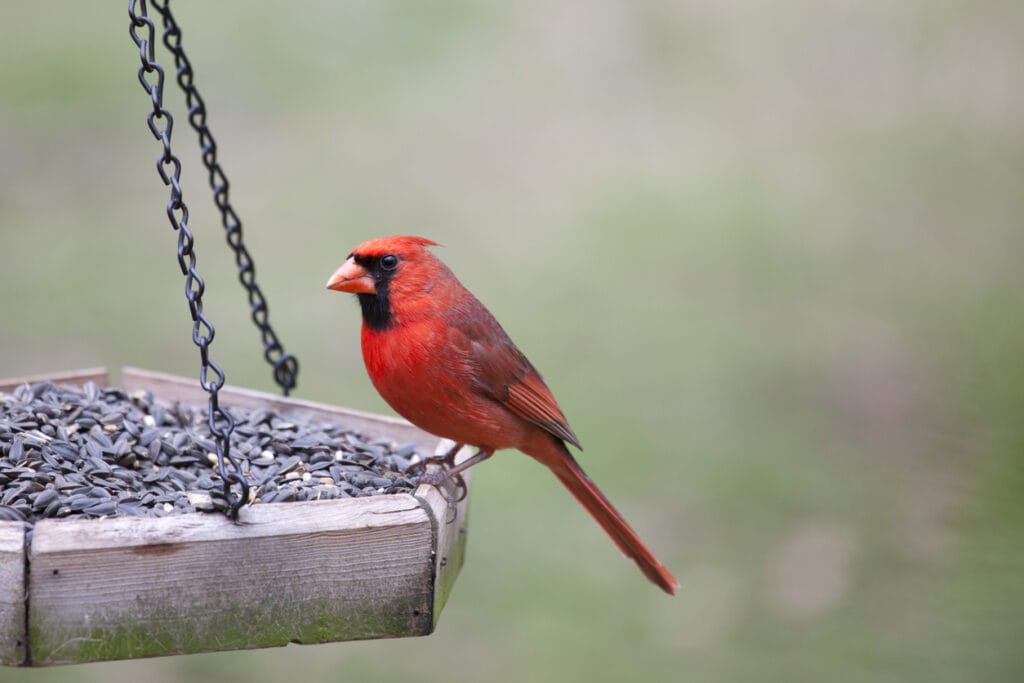
Cardinals are not monogamous, but they do tend to stay bonded to their mate for the breeding season. However, there are exceptions to this, and genetic studies show there is a certain amount of unfaithfulness.
Despite some of the chicks not being descended from their ‘father,’ the male cardinal takes almost the young’s soul care. His duties are not limited to looking after the hatchlings, though. He is also expected to feed his mate while she remains in the nest, incubating their eggs.
Males feeding females beak-to-beak is a part of the mating ritual for cardinals. This affectionate behavior has helped the cardinal create a beloved reputation.
Males taking responsibility for the young allow cardinals to raise as many as four broods in a season. The female will often begin building a new nest while the male still cares for the latest batch of young. He will bring the female food as well as building material for the nest.
All of this while still feeding and teaching the young the repair of songs they will need in adulthood.
Remarkably the brain of a cardinal changes between the seasons. Cardinals sing in springtime to advertise the borders of their territory and also to attract a mate. The region of the brain that deals with communication enlarges in spring. This focussed cognitive function helps the birds to understand the various messages that are conveyed in song.
Conclusion
Cardinals are a wonderful friend that can remain visiting your garden year-round. To build the trust of one until it eats from your hand is one of the purest pleasures for a bird enthusiast. we hope you enjoyed this article on hand feeding Cardinals.
Fly high friends!




